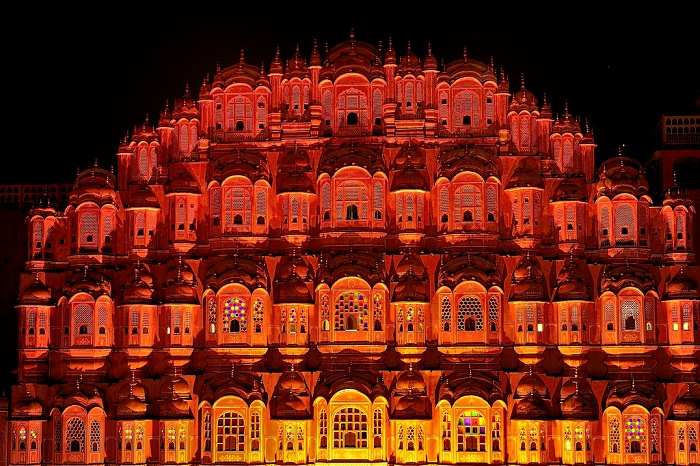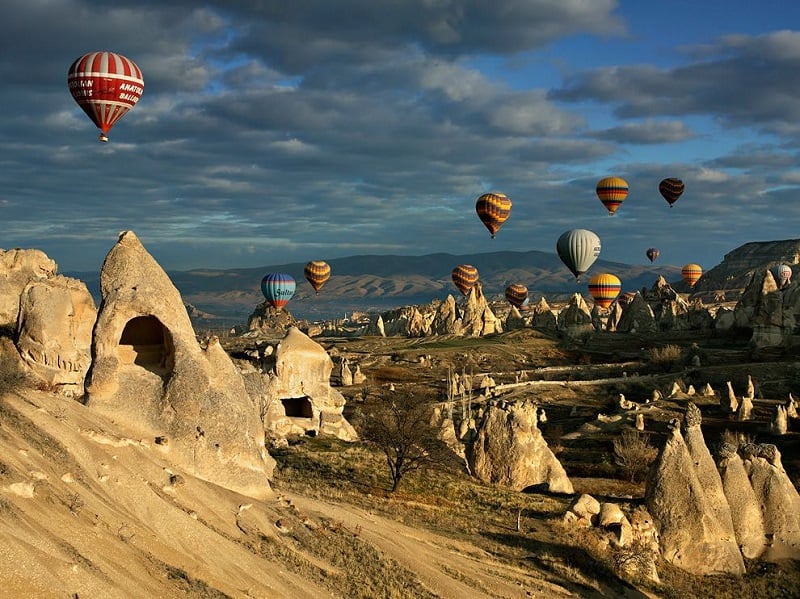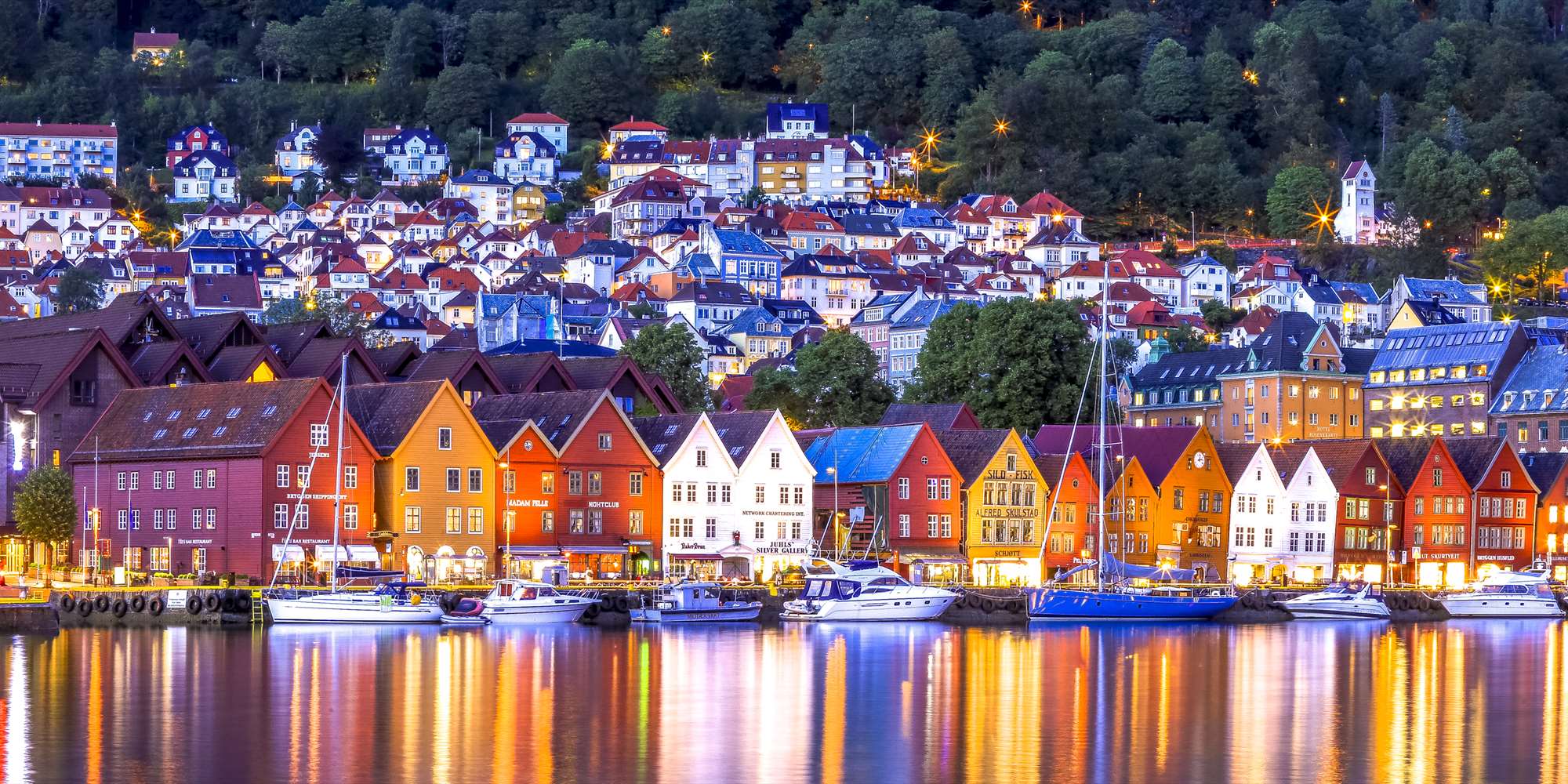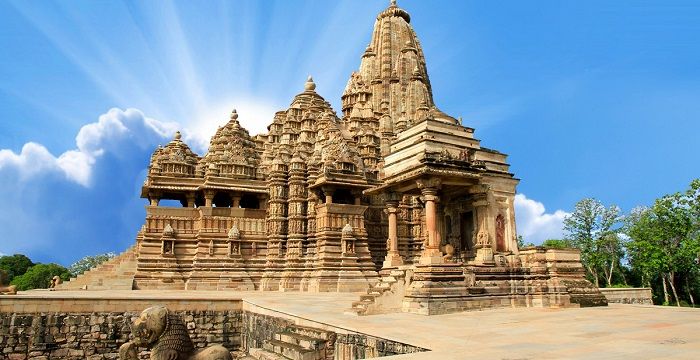Hawa Mahal, Jaipur
rathore
September 23, 2019

The gigantic building of Hawa Mahal remains at the crossing point of the primary street in Jaipur, Badi Chaupad and was worked by Maharaja Sawai Pratap Singh in the year 1799. Hawa Mahal gets its name from its special structure, which is a work of little windows that enabled cool breeze to enter the royal residence and henceforth kept the castle happy with during the blistering summer months. The fundamental explanation for the royal residence's development was to permit the ladies of the regal house to watch the celebrations on the lanes while being inconspicuous from the outside similar to the custom of the land. It is found ideal on the edge of the City Palace Jaipur and stretches out ideal to the 'zenana'.
Hawa Mahal is a structure made of red and pink sandstone and has a pyramidal structure which nearly looks like a crown. It has been adorned with 953 minor windows, otherwise called 'Jharokhas' and decorated with beautiful latticework. From inside, the Hawa Mahal castle depends on five stories every one of which has a particularly designed chamber. An enchanting wellspring invites you inside the primary castle, from whereon you can advance up to the various floors. The highest point of the royal residence offers a splendid perspective on the City Palace, Jantar Mantar and the ever-occupied Siredeori Bazar. There is a little gallery also which holds some rich relics and smaller than expected works of art.
Hawa Mahal was worked in 1799 by Maharaja Sawai Pratap Singh as a continuation of the imperial City Palace and was structured by Lal Chand Ustad as Krishna's crown. Back then, the Rajputs used to pursue the Purdah framework and the imperial ladies didn't show up before people in general. As they wished to pursue the everyday occasions, the Hawa Mahal was worked with very little windows and screened overhangs to give a feeling of opportunity among the ladies.
Hawa Mahal, Jaipur
![Hawa Mahal, Jaipur]() Reviewed by rathore
on
September 23, 2019
Rating:
Reviewed by rathore
on
September 23, 2019
Rating:











 Vatican City (Città del Vaticano in Italian) is an autonomous city state situated in the core of Rome, led by the Pope (Bishop of Rome). It is the focal point of power over the Roman Catholic Church.
Vatican City (Città del Vaticano in Italian) is an autonomous city state situated in the core of Rome, led by the Pope (Bishop of Rome). It is the focal point of power over the Roman Catholic Church. Worked between 950 AD and 1050 AD by the leaders of the Chandela Dynasty, the Khajuraho Temples were a bunch of 85 Hindu and Jain sanctuaries, out of which just 25 are as yet enduring. These sanctuaries are unpredictably and flawlessly adorned and improved with figure and workmanship. Cut from hard stream sandstone, one of the fundamental appeals of these dividers is the sexual workmanship. Be that as it may, this world popular sexual craftsmanship establishes just 10% of the all out models of Khajuraho.
Worked between 950 AD and 1050 AD by the leaders of the Chandela Dynasty, the Khajuraho Temples were a bunch of 85 Hindu and Jain sanctuaries, out of which just 25 are as yet enduring. These sanctuaries are unpredictably and flawlessly adorned and improved with figure and workmanship. Cut from hard stream sandstone, one of the fundamental appeals of these dividers is the sexual workmanship. Be that as it may, this world popular sexual craftsmanship establishes just 10% of the all out models of Khajuraho. Found only east of the Roman Forum, the enormous stone amphitheater known as the Colosseum was appointed around A.D. 70-72 by Emperor Vespasian of the Flavian administration as a blessing to the Roman individuals. In A.D. 80, Vespasian's child Titus opened the Colosseum–formally known as the Flavian Amphitheater–with 100 days of games, including gladiatorial battles and wild creature battles. Following four centuries of dynamic use, the glorious field fell into disregard, and up until the eighteenth century it was utilized as a wellspring of structure materials. Despite the fact that 66% of the first Colosseum has been decimated after some time, the amphitheater stays a prominent visitor goal, just as a notorious image of Rome and its long, turbulent history.
Found only east of the Roman Forum, the enormous stone amphitheater known as the Colosseum was appointed around A.D. 70-72 by Emperor Vespasian of the Flavian administration as a blessing to the Roman individuals. In A.D. 80, Vespasian's child Titus opened the Colosseum–formally known as the Flavian Amphitheater–with 100 days of games, including gladiatorial battles and wild creature battles. Following four centuries of dynamic use, the glorious field fell into disregard, and up until the eighteenth century it was utilized as a wellspring of structure materials. Despite the fact that 66% of the first Colosseum has been decimated after some time, the amphitheater stays a prominent visitor goal, just as a notorious image of Rome and its long, turbulent history. Christ the Redeemer, Portuguese Cristo Redentor, giant statue of Jesus Christ at the summit of Mount Corcovado, Rio de Janeiro, southeastern Brazil. It was finished in 1931 and stands 98 feet (30 meters) tall, its on a level plane outstretched arms spreading over 92 feet (28 meters). The statue, made of strengthened cement clad in a mosaic of thousands of triangular soapstone tiles, sits on a square stone platform base around 26 feet (8 meters) high, which itself is arranged on a deck on the mountain's summit. The statue is the biggest Art Deco-style form on the planet and is one of Rio de Janeiro's most conspicuous landmarks.In the 1850s the Vincentian minister Pedro Maria Boss recommended setting a Christian landmark on Mount Corcovado to respect Isabel, princess official of Brazil and the little girl of Emperor Pedro II, in spite of the fact that the task was rarely affirmed. In 1921 the Roman Catholic archdiocese of Rio de Janeiro recommended that a statue of Christ be based on the 2,310-foot (704-meter) summit, which, in light of its directing tallness, would make it noticeable from anyplace in Rio. Residents requested of Pres. Epitácio Pessoa to permit the development of the statue on Mount Corcovado.Permission was in truth, and the establishment stone of the base was formally laid on April 4, 1922—to recognize the centennial on that day of Brazil's autonomy from Portugal—in spite of the fact that the landmark's last plan had not yet been picked. That equivalent year a challenge was held to discover a planner, and the Brazilian architect Heitor da Silva Costa was picked based on his representations of a figure of Christ holding a cross in his correct hand and the world in his left. As a team with Brazilian craftsman Carlos Oswald, Silva Costa later altered the arrangement; Oswald has been credited with the thought for the figure's standing posture with arms spread wide. The French stone carver Paul Landowski, who worked together with Silva Costa on the last structure, has been credited as the essential originator of the figure's head and hands. Assets were raised secretly, basically by the congregation. Under Silva Costa's supervision, development started in 1926 and proceeded for a long time. During that time materials and laborers were moved to the summit by means of railway.After its finishing, the statue was devoted on October 12, 1931. Throughout the years it has experienced occasional fixes and redesigns, incorporating an exhaustive cleaning in 1980, in anticipation of the visit of Pope John Paul II to Brazil that year, and a noteworthy task in 2010, when the surface was fixed and repaired. Lifts and all encompassing lifts were included start in 2002; already, so as to arrive at the statue itself, vacationers climbed in excess of 200 stages as the last phase of the excursion. In 2006, to stamp the statue's 75th commemoration, a sanctuary at its base was sanctified to Our Lady of Aparecida, the benefactor holy person of Brazil.
Christ the Redeemer, Portuguese Cristo Redentor, giant statue of Jesus Christ at the summit of Mount Corcovado, Rio de Janeiro, southeastern Brazil. It was finished in 1931 and stands 98 feet (30 meters) tall, its on a level plane outstretched arms spreading over 92 feet (28 meters). The statue, made of strengthened cement clad in a mosaic of thousands of triangular soapstone tiles, sits on a square stone platform base around 26 feet (8 meters) high, which itself is arranged on a deck on the mountain's summit. The statue is the biggest Art Deco-style form on the planet and is one of Rio de Janeiro's most conspicuous landmarks.In the 1850s the Vincentian minister Pedro Maria Boss recommended setting a Christian landmark on Mount Corcovado to respect Isabel, princess official of Brazil and the little girl of Emperor Pedro II, in spite of the fact that the task was rarely affirmed. In 1921 the Roman Catholic archdiocese of Rio de Janeiro recommended that a statue of Christ be based on the 2,310-foot (704-meter) summit, which, in light of its directing tallness, would make it noticeable from anyplace in Rio. Residents requested of Pres. Epitácio Pessoa to permit the development of the statue on Mount Corcovado.Permission was in truth, and the establishment stone of the base was formally laid on April 4, 1922—to recognize the centennial on that day of Brazil's autonomy from Portugal—in spite of the fact that the landmark's last plan had not yet been picked. That equivalent year a challenge was held to discover a planner, and the Brazilian architect Heitor da Silva Costa was picked based on his representations of a figure of Christ holding a cross in his correct hand and the world in his left. As a team with Brazilian craftsman Carlos Oswald, Silva Costa later altered the arrangement; Oswald has been credited with the thought for the figure's standing posture with arms spread wide. The French stone carver Paul Landowski, who worked together with Silva Costa on the last structure, has been credited as the essential originator of the figure's head and hands. Assets were raised secretly, basically by the congregation. Under Silva Costa's supervision, development started in 1926 and proceeded for a long time. During that time materials and laborers were moved to the summit by means of railway.After its finishing, the statue was devoted on October 12, 1931. Throughout the years it has experienced occasional fixes and redesigns, incorporating an exhaustive cleaning in 1980, in anticipation of the visit of Pope John Paul II to Brazil that year, and a noteworthy task in 2010, when the surface was fixed and repaired. Lifts and all encompassing lifts were included start in 2002; already, so as to arrive at the statue itself, vacationers climbed in excess of 200 stages as the last phase of the excursion. In 2006, to stamp the statue's 75th commemoration, a sanctuary at its base was sanctified to Our Lady of Aparecida, the benefactor holy person of Brazil.
 The Taj Mahal was worked by the Mughal sovereign Shah Jahān (ruled 1628–58) to deify his better half Mumtāz Maḥal ("Chosen One of the Palace"). She passed on in labor in 1631, in the wake of having been the ruler's indistinguishable partner since their marriage in 1612. The designs for the complex have been credited to different planners of the period, however the main draftsman was most likely Ustad Aḥmad Lahawrī, an Indian of Persian plummet. The five head components of the mind boggling—principle entryway, garden, mosque. jawab (actually "answer"; a structure reflecting the mosque), and sepulcher (counting its four minarets)— were imagined and planned as a brought together element as indicated by the precepts of Mughal building practice, which permitted no resulting expansion or change. Building initiated around 1632. In excess of 20,000 specialists were utilized from India, Persia, the Ottoman Empire, and Europe to finish the sepulcher itself by around 1638–39; the aide structures were done by 1643, and beautification work proceeded until at any rate 1647. Altogether, development of the 42-section of land (17-hectare) complex spread over 22 years.A custom relates that Shah Jahān initially planned to fabricate another sepulcher over the waterway to house his own remaining parts. That structure was to have been built of dark marble, and it was to have been associated by a scaffold to the Taj Mahal. He was dismissed in 1658 by his child Aurangzeb, nonetheless, and was detained for an amazing remainder in Agra Fort.
The Taj Mahal was worked by the Mughal sovereign Shah Jahān (ruled 1628–58) to deify his better half Mumtāz Maḥal ("Chosen One of the Palace"). She passed on in labor in 1631, in the wake of having been the ruler's indistinguishable partner since their marriage in 1612. The designs for the complex have been credited to different planners of the period, however the main draftsman was most likely Ustad Aḥmad Lahawrī, an Indian of Persian plummet. The five head components of the mind boggling—principle entryway, garden, mosque. jawab (actually "answer"; a structure reflecting the mosque), and sepulcher (counting its four minarets)— were imagined and planned as a brought together element as indicated by the precepts of Mughal building practice, which permitted no resulting expansion or change. Building initiated around 1632. In excess of 20,000 specialists were utilized from India, Persia, the Ottoman Empire, and Europe to finish the sepulcher itself by around 1638–39; the aide structures were done by 1643, and beautification work proceeded until at any rate 1647. Altogether, development of the 42-section of land (17-hectare) complex spread over 22 years.A custom relates that Shah Jahān initially planned to fabricate another sepulcher over the waterway to house his own remaining parts. That structure was to have been built of dark marble, and it was to have been associated by a scaffold to the Taj Mahal. He was dismissed in 1658 by his child Aurangzeb, nonetheless, and was detained for an amazing remainder in Agra Fort. Angkor Wat is a temple complex in Cambodia and is the largest religious monument in the world, on a site measuring 162.6 hectares (1,626,000 m2; 402 acres).[1] Originally constructed as a Hindu temple dedicated to the god Vishnu for the Khmer Empire, it was gradually transformed into a Buddhist temple towards the end of the 12th century.[2] It was built by the Khmer King Suryavarman II[3] in the early 12th century in Yaśodharapura (Khmer: យសោធរបុរៈ, present-day Angkor), the capital of the Khmer Empire, as his state temple and eventual mausoleum. Breaking from the Shaiva tradition of previous kings, Angkor Wat was instead dedicated to Vishnu. As the best-preserved temple at the site, it is the only one to have remained a significant religious centre since its foundation. The temple is at the top of the high classical style of Khmer architecture. It has become a symbol of Cambodia,[4] appearing on its national flag, and it is the country's prime attraction for visitors.[5]
Angkor Wat is a temple complex in Cambodia and is the largest religious monument in the world, on a site measuring 162.6 hectares (1,626,000 m2; 402 acres).[1] Originally constructed as a Hindu temple dedicated to the god Vishnu for the Khmer Empire, it was gradually transformed into a Buddhist temple towards the end of the 12th century.[2] It was built by the Khmer King Suryavarman II[3] in the early 12th century in Yaśodharapura (Khmer: យសោធរបុរៈ, present-day Angkor), the capital of the Khmer Empire, as his state temple and eventual mausoleum. Breaking from the Shaiva tradition of previous kings, Angkor Wat was instead dedicated to Vishnu. As the best-preserved temple at the site, it is the only one to have remained a significant religious centre since its foundation. The temple is at the top of the high classical style of Khmer architecture. It has become a symbol of Cambodia,[4] appearing on its national flag, and it is the country's prime attraction for visitors.[5]
